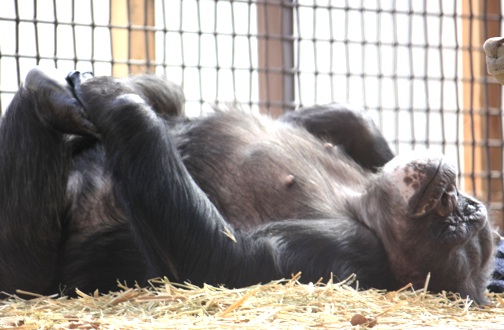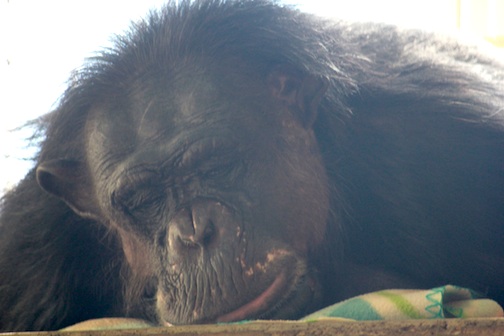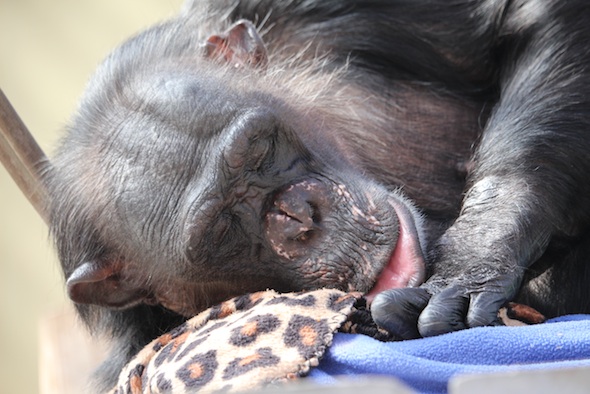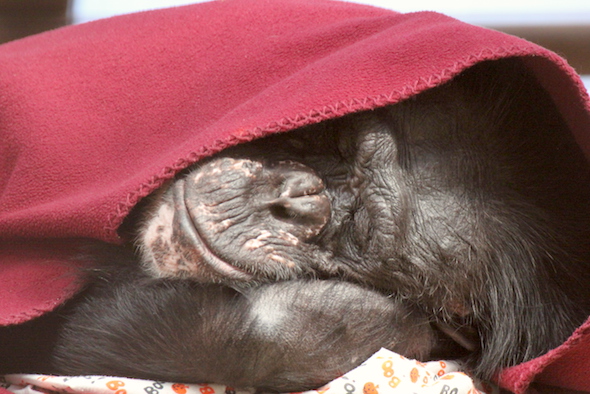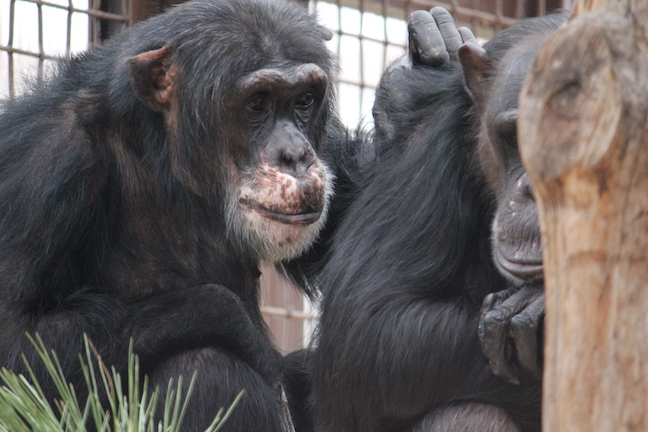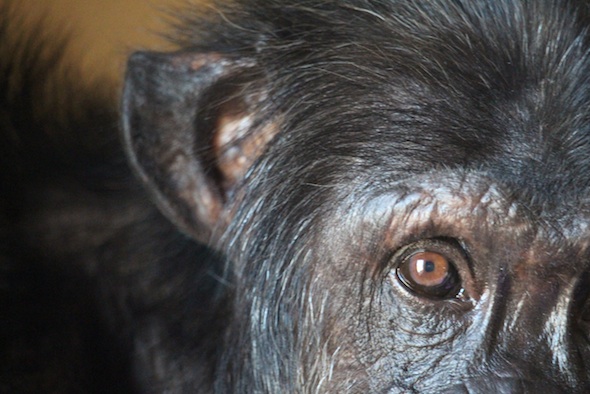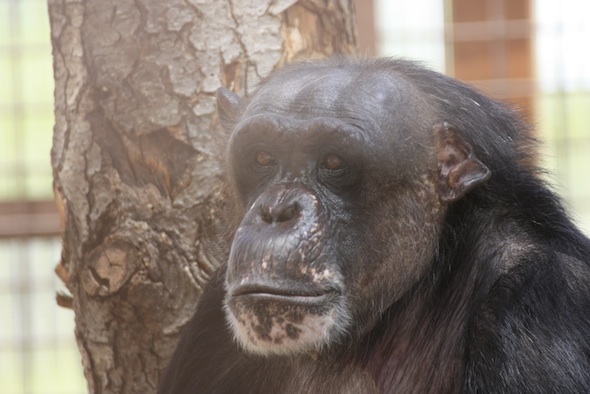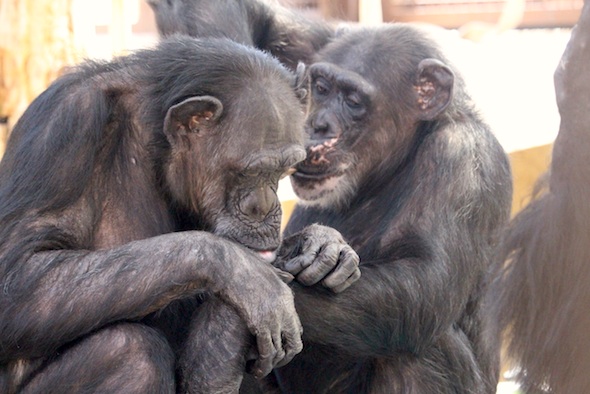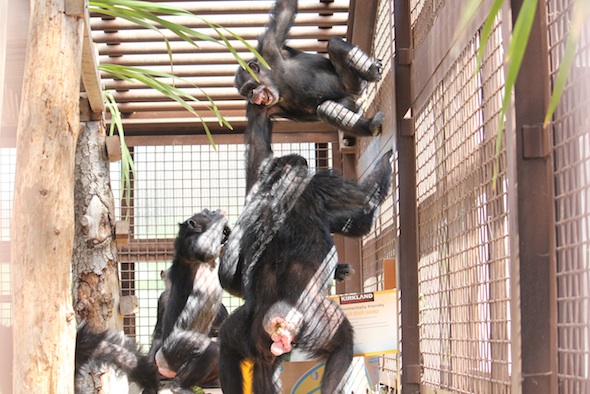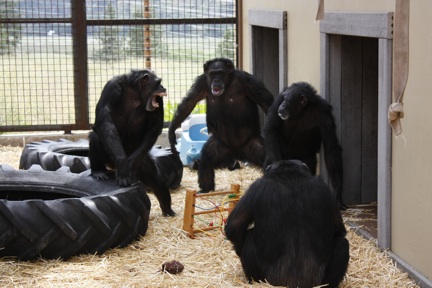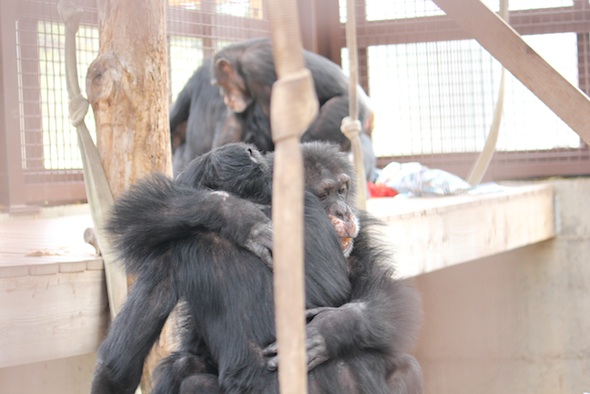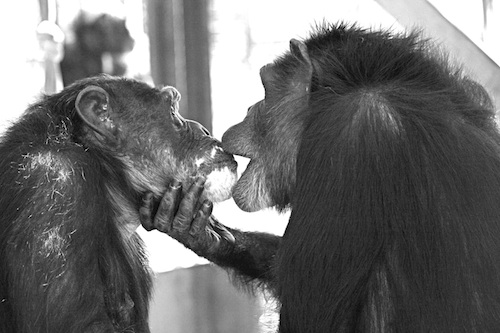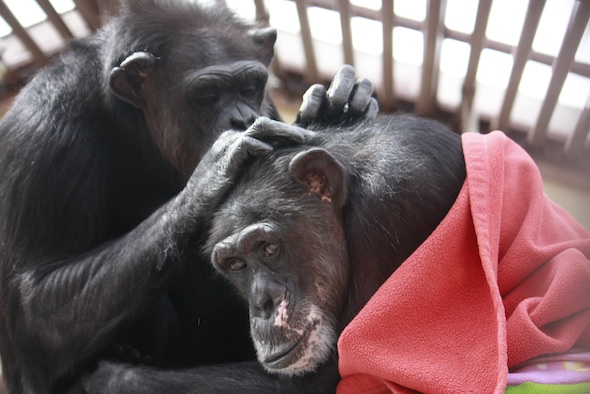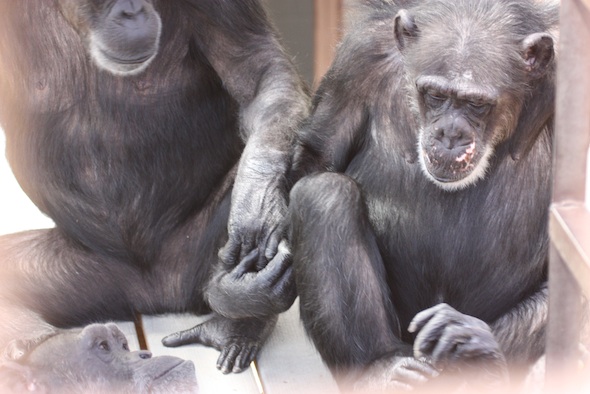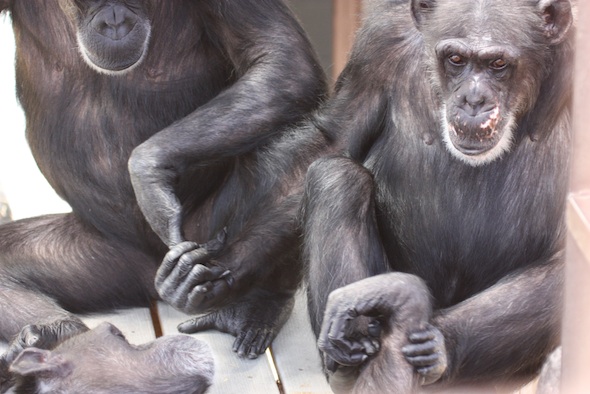A quick word of warning: If you do not wish to see footage of chimps being aggressive towards one another, please skip this video.
Recently, Grace posted to our social media accounts asking people to submit questions for Q&A posts on our blog. One of the questions jumped out at me: What is the best and worst part of your job? I immediately thought of dozens of things I like best about this line of work – we get to provide the chimps with life-changing and long overdue experiences like going outdoors and climbing trees, we help them form new friendships, we are treated on a daily basis to displays of intelligence and emotion that many people still believe are reserved for humans alone, and we get to do the thing we love with people we enjoy working with in a breathtakingly beautiful environment. Oh, and I get to drive a tractor sometimes. Maybe I should have put that first? Anyway, how could I choose just one “best” thing?
But when it comes to the worst part of the job, there’s no question in my mind what it is: it’s the violence.
Chimpanzees are naturally aggressive. Not all the time, mind you, or even most of the time. Aggression actually makes up a very small part of their daily activity and is just a tiny facet of their overall demeanor. Most of their waking hours are spent resting, quietly grooming, exploring, and playing. And most of their interactions with one another are overwhelmingly friendly and cooperative – and often extremely gentle, tender, and loving. But these hours upon hours of peace and playfulness are punctuated by boisterous displays of dominance and, on occasion, acts of real, raw violence – violence between the very people we have dedicated our careers, and in many ways our whole lives, to caring for. For us caregivers, it amounts to a lot of worrying about a thing over which we have very little control.
Which brings me to this video. I’ve been wanting to share it for a while, for a couple of reasons. First, when a chimpanzee gets injured here at CSNW, people naturally ask who was fighting and why. Our answer is usually some form of “I don’t know” and “I don’t know.” It’s not because we aren’t paying attention, but rather because the nature of chimp fights make them hard to interpret at times. They can happen quickly with little warning, they rarely occur between only two individuals, and the individuals who get into a fight in the first place are not always the ones who come away injured. I’m grateful for the many books and documentaries that have demonstrated chimpanzees’ remarkable capacity for strategic aggression, but reality is often so much messier. Yes, chimps sometimes exhibit coalitionary aggression for the purpose of social status. But in addition to being Machiavellian, chimpanzees are also xenophobic, insecure, jealous, petty, anxious, and just plain cranky, and any and all of these can serve as the impetus to bite someone’s finger off.
Second, it’s important for people to get an accurate picture of how chimps live. We don’t want anyone to think that life for chimpanzees is nothing but eating, playing, and climbing trees. While we often discuss their injuries, we aren’t usually in a position to show the fights in which they occurred. As you can see, however, we can occasionally capture them on our security camera system.
But perhaps most importantly, I want to show you how they make up afterwards. Chimp societies wouldn’t hold together very long if the individuals within them didn’t have the capacity to reconcile, and that is the saving grace for both the chimpanzees themselves and our own ability to care for them. Because no matter how bad things get, they usually find a way to move forward together.
…
So…the video. For what it’s worth, I’ve made it unlisted on YouTube so hopefully anyone watching will find it here and will also be reading this for context.
In the video, which is from December, you witness the beginning of the conflict as Willy B and Terry run out into the Greenhouse. Terry is upset, which you can see as he screams and splays himself out on the catwalk before running back inside for reassurance. The video picks up again in the Playroom, where Terry and Willy B face off momentarily by the door downstairs. The group congregates upstairs and Rayne then approaches Mave who is at the top of the tree structure. As Willy B moves in, possibly to protect Mave (though that is certainly open to interpretation), he comes face to face with Gordo. And that’s when all heck breaks loose. It took me several minutes of playing over and over in slow mo to piece together what was happening. For a time, I even falsely accused Rayne of a crime she didn’t commit. Sorry, Raynie!
We often differentiate between minor chimp fights and more serious ones based on whether or not they “ball up.” Balling up occurs when they grapple and bite, as opposed to chasing and hitting, at which point the caregivers can no longer tell who is who in real time. When chimps ball up, we know that we are going to have to look for injuries afterwards – checking ears and counting fingers and toes as they tend to their wounds. In this case, the chimps ball up for only a brief moment. They leap down to the floor through the fire hose vines and Willy B escapes up the stairs only to find his finger caught in Lucky’s mouth. He somehow manages to withdraw his finger intact and escapes through Playroom 3 to the Mezzanine where the screaming and reassurance-seeking continues. Fortunately, everyone made it out with only minor injuries.
At breakfast the next morning, Gordo – who was uninjured in the fight and whose “side,” you could say, came out on top – approached Willy B to reconcile. Breathy panting serves to express friendly intentions, and Gordo offers both his backside and his fingers and toes to Willy B. Isn’t it ironic that the way to make up after a fight in which you tried bite each other’s toes off is to place your toes in each other’s mouths again? While Mave and Rayne similarly reconcile, Gordo asks Willy B to follow him upstairs to groom. And once again, all is well.
…
So that’s a chimp fight and the aftermath. Some are more serious, many less so. Some last for only a minute or two while others have gone on for as long as 20 minutes. The boys fight the boys, the girls fight the girls, and the boys and girls fight each other. It happens in new groups and in groups like the seven that have been together for 17 years. They are loud and fast and frequently complicated. Serious fights are relatively rare but they’re part of caring for chimps and while you never really get used to it, you do come to accept it. Running a tortoise sanctuary would certainly be better for the ol’ blood pressure. But if you love caring for chimps, as I do, you can’t pick and choose which parts you get to experience.
I’m sure this post raises more questions than it answers, so ask away and I’ll do my best to respond below! And my thanks to all of you for allowing us to explore a more serious and fraught topic from time to time. Hopefully it helps present a truer version of sanctuary life for both the chimps and the humans that care for them.
